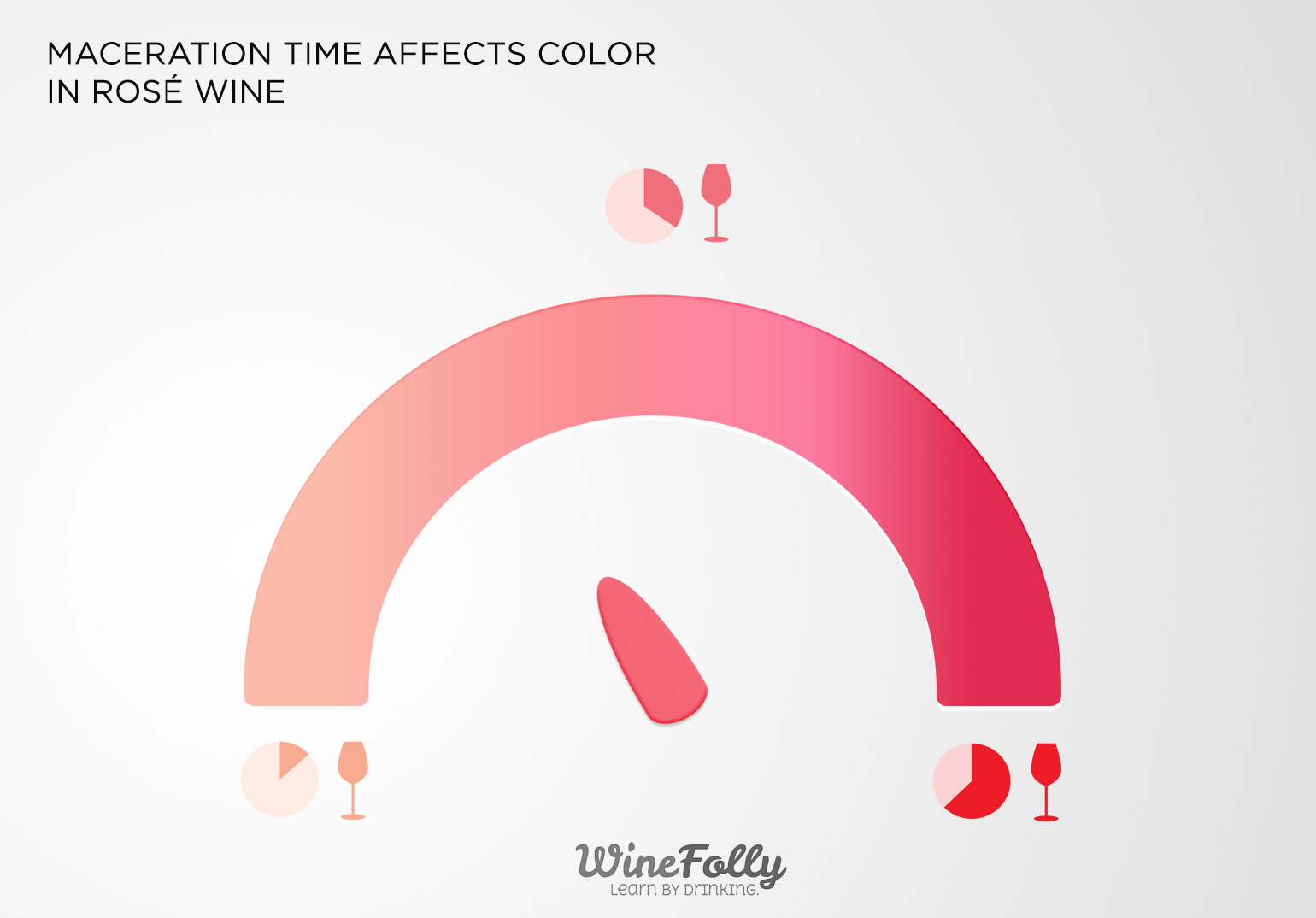Pink wine happily spans the color space between red and white wine. In many ways, rosé is more a state of mind than a style.
Rosé wine is made by letting the skins of red grapes touch the juice for just a short time. While red wines often ferment for weeks on their skins, rosé wines get their color in just a few hours.
The winemaker controls how long the grape skins stay in contact with the juice, removing them once the desired shade is reached. Since the skins provide the red pigment, this step determines how pale or dark the rosé becomes.
Nearly any red wine grape (from Cabernet Sauvignon to Syrah) can be used to make rosé wine. Still, certain varieties and styles are more commonly chosen for their flavor and character.
Tasting Rosé Wine
Rosé typically offers flavors of red fruit, flowers, citrus, and melon, often with a refreshing, slightly green note on the finish — think celery or rhubarb. The grape variety plays a big role in shaping the wine’s final taste.
For instance, a deeply-colored Italian Aglianico rosé (or Rosato in Italy), delivers cherry and orange zest flavors. Meanwhile, a pale Provence rosé from Grenache may offer honeydew, lemon, and a hint of celery.
How Is Rosé Wine Made?
There are three primary ways to make rosé wine. The most common way is called maceration, and it’s illustrated in the graphic below.

Maceration Method
This technique involves letting red grapes sit, or macerate, in their juice for a period. Afterward, the juice is fermented into rosé. This method usually creates a deeper color and richer flavor.
Maceration is especially popular in regions like Provence and Languedoc-Roussillon, France, where pink wine is just as significant as red or white.
TIP: Rosé wines touch red grape skins anywhere between 2–20 hours.

Saignée or “Bled” Method
In this approach, winemakers “bleed off” a portion of juice during the early stages of red wine fermentation. That juice is then fermented separately to make rosé. This method not only produces rosé, but also concentrates the red wine that remains.
Saignée rosés are relatively rare and often make up less than 10% of a winery’s total production. You’ll find this method used in regions known for premium red wines, like Napa and Sonoma.
Blending Method
This approach involves mixing a small amount of red wine into a vat of white wine to create rosé. It doesn’t take much, usually no more than 5%, to give the wine a pink hue.
While uncommon in still rosé wines, blending is widely used in sparkling wine production, especially in Champagne.
A great example is Ruinart’s rosé Champagne, which blends mostly Chardonnay with a small amount of red Pinot Noir.

